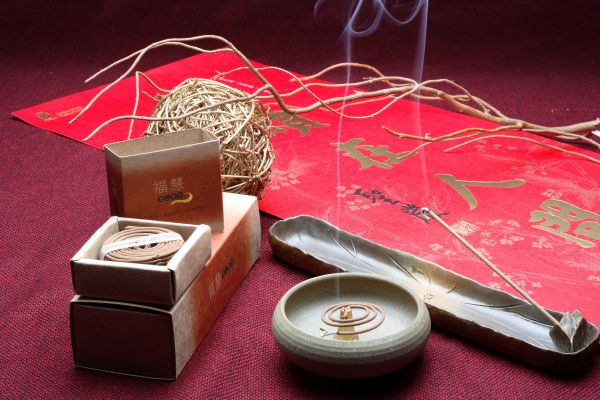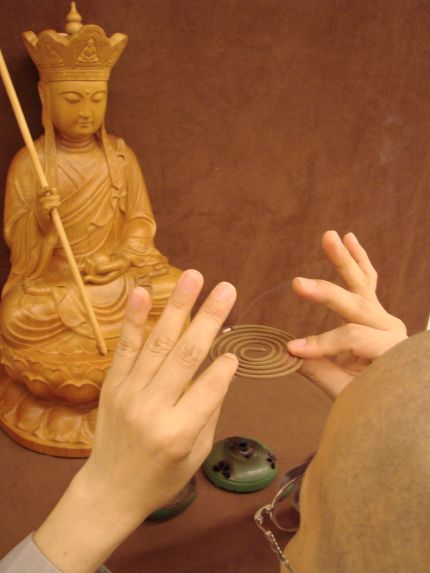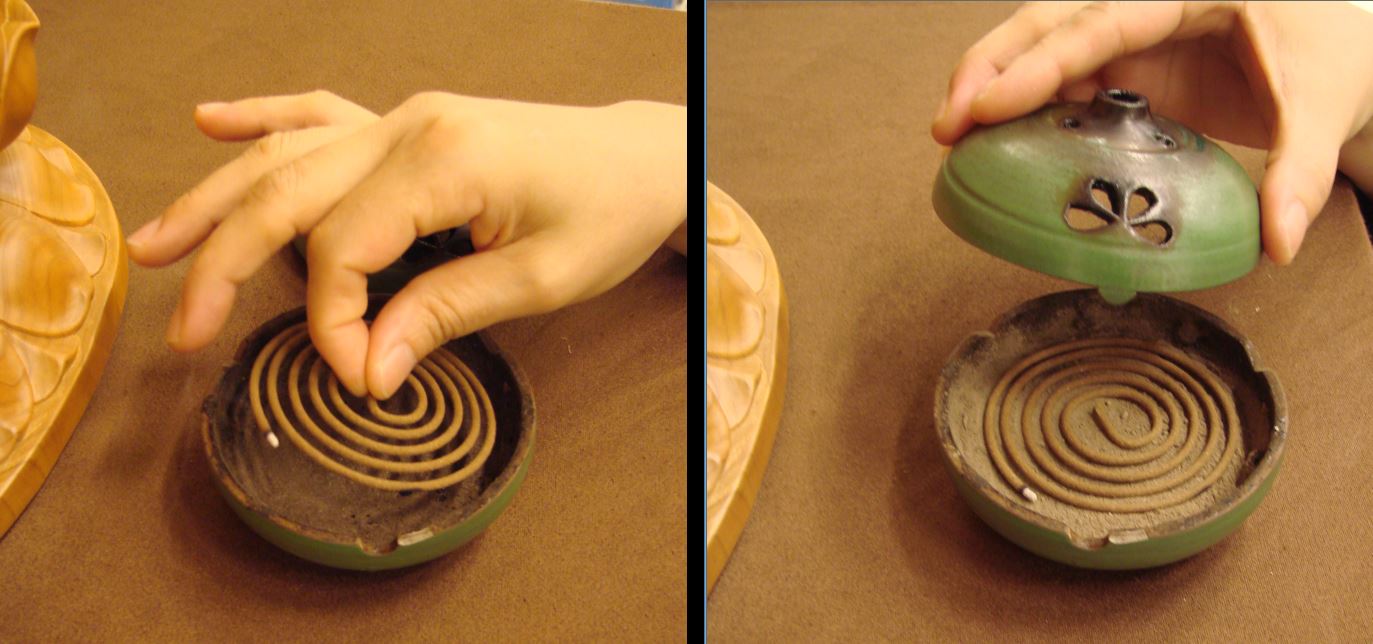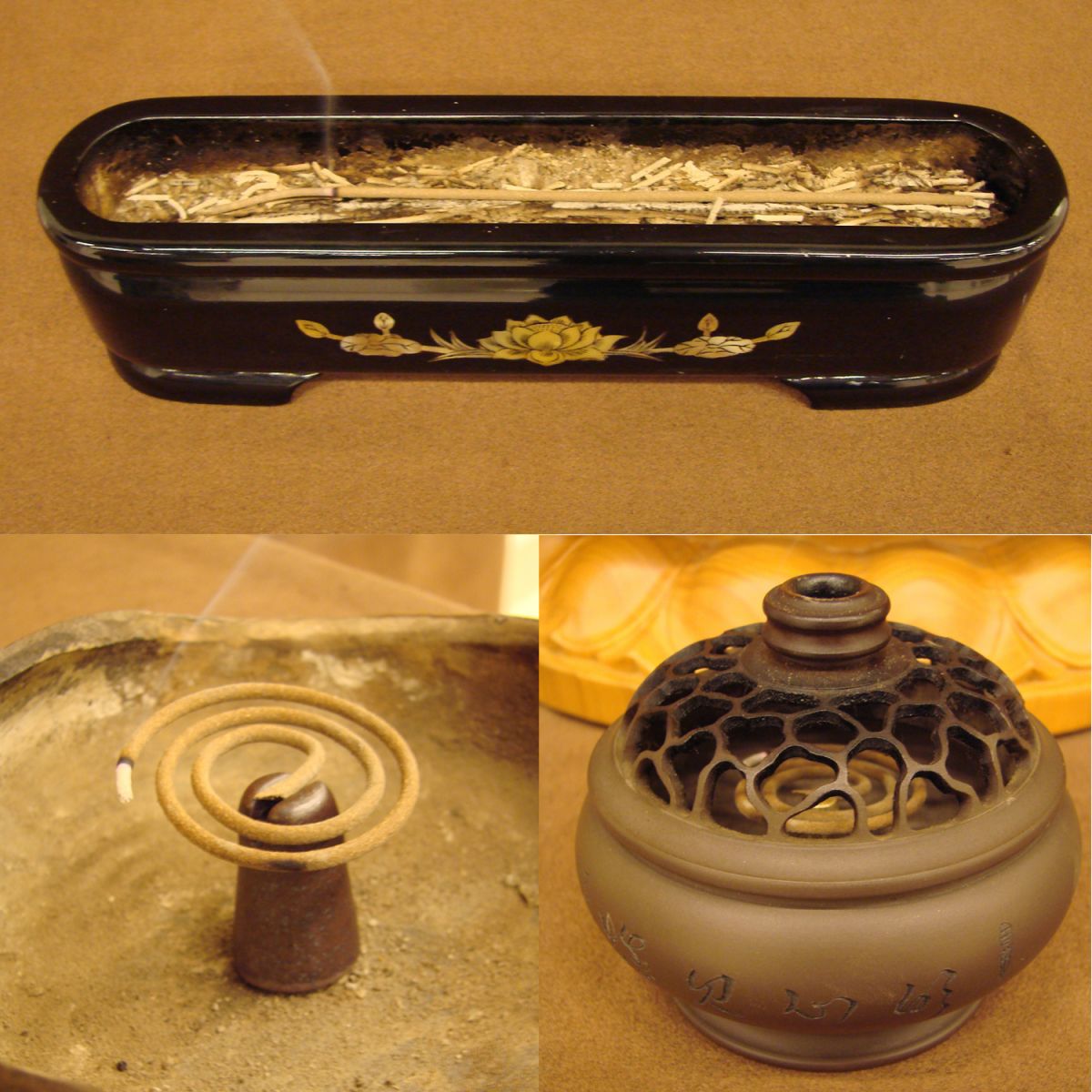Special Topics
Incense and Incense Burner
 “Burning incense” is considered an extraordinary and sacred offering made to the Buddha. Making this offering represents one of the rituals to show the reverence and devotion of the Buddhists. In particular, the incense extracted from plants, such as sandalwood, Chinese eaglewood, lilac, and varnish trees, has long been used in Chinese Buddhism.
“Burning incense” is considered an extraordinary and sacred offering made to the Buddha. Making this offering represents one of the rituals to show the reverence and devotion of the Buddhists. In particular, the incense extracted from plants, such as sandalwood, Chinese eaglewood, lilac, and varnish trees, has long been used in Chinese Buddhism.
Incense comes in a variety of forms. The four common types of incense take the forms of powder, stick, coil, and cone. Each type of incense is similar in the way they are burned and used to make the offering.. All that matters is to select an appropriate incense burner that works best for the specific type of incense. For example, stick incense fits better in a horizontally long, shallow burner where the incense can be placed horizontally. The powder, cone, and coil incenses fit better in a round deep burner with a wide top. There are no special rules for selecting incense or incense burners as long as they can satisfy the users’ needs.
The appropriate time to burn incense as an offering to the Buddha is before the Morning Service. In terms of how to burn incenses, let’s take coil incense as an example. Use one piece at a time. Light the coil incense with the burning tip facing forward. Use the thumb and index finger of both hands to steady the incense , while letting the other fingers naturally face outward. Hold it up to eyebrow level as a bow to the Buddha, and place it in the burner. Gently cover the burner and prostrate to the Buddha three times. Then, continue with the morning chanting. If the incense still keeps burning after the morning service ends, there’s no need to put it out. Just leave it to burn out naturally.
 The stick incense offering is quite similar to that of the coil incense. Use one piece each time, light the coil incense, and hold it using the thumb and index finger up to the level of the eyebrows as the way to the Buddha, and gently place it in the burner. There is no need to clean up the remaining ash in the burner as long as it is kept clean. Keeping some amount of ash (70%-80% full) in the burner actually helps with the burning, so that the incense can have enough oxygen to keep burning. However, if you do not prefer to leave the remaining ash in the burner, you may also use an incense holder as an aid. If you need to clean up the burner, soak it in hot water, wash it, and wipe it clean.
The stick incense offering is quite similar to that of the coil incense. Use one piece each time, light the coil incense, and hold it using the thumb and index finger up to the level of the eyebrows as the way to the Buddha, and gently place it in the burner. There is no need to clean up the remaining ash in the burner as long as it is kept clean. Keeping some amount of ash (70%-80% full) in the burner actually helps with the burning, so that the incense can have enough oxygen to keep burning. However, if you do not prefer to leave the remaining ash in the burner, you may also use an incense holder as an aid. If you need to clean up the burner, soak it in hot water, wash it, and wipe it clean.
 When selecting incense, please pay close attention to the ingredients. The ones made of natural materials are the best. Be sure to avoid chemical ingredients that could be harmful to your health.
When selecting incense, please pay close attention to the ingredients. The ones made of natural materials are the best. Be sure to avoid chemical ingredients that could be harmful to your health.
2. After bowing to the Buddha, gently place the incense in the burner.
3. Gently cover the burner.
4. After making the offering, prostrate to the Buddha three times and continue with the morning chanting.
 BOX2: Introduction to Incense Burners
BOX2: Introduction to Incense Burners1. Burner for Stick Incense Features: Long horizontally, shallow, suitable for stick incense to be placed horizontally, easy to clean
2. Ring-Shaped Incense Burner Features: Ring-shaped, deep, suitable for coil incense, powder incense, and cone incense
3. Incense Holder If you do not prefer to have remaining ashes in the burner, you may also use an incense holder to help with burning.
(Demonstrated by Ven. Guo Zeng of Dharma Drum Mountain)
Resource: Issue 294 of Life Magazine, Dharma Drum Publishing Corporation
Text: 林鍾妏 (Lin Chung-wen)
Translation: Olivia
Editing: Keith Brown
